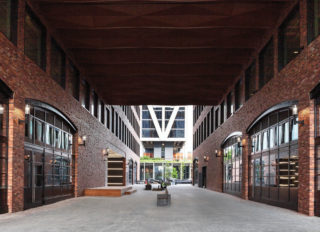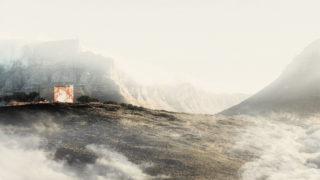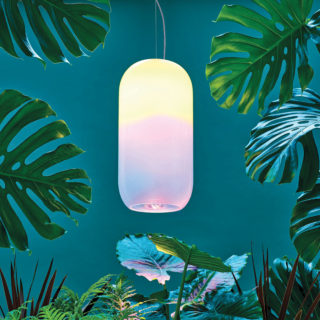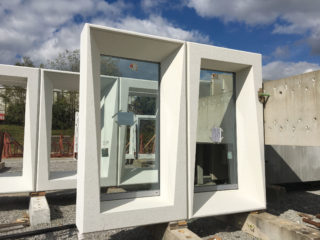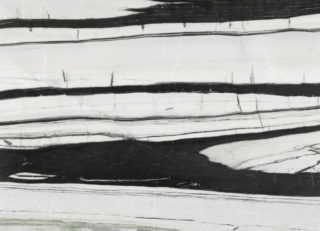< Read more from “Building Materials, Ancient to Future”
The Shed, the new Hudson Yards performance space by Diller Scofidio + Renfro (DSR) and Rockwell Group, has rapidly established a high profile in Manhattan’s arts world. Two features of its McCourt Space are particularly eye-catching: its kinetic steel framework and quiltlike cladding. The inflated cushions of translucent white ethylene tetrafluoroethylene (ETFE), light and flexible enough to allow for the operable frame and other efficiencies with materials and energy, proclaim that this institution plays by brand-new rules.
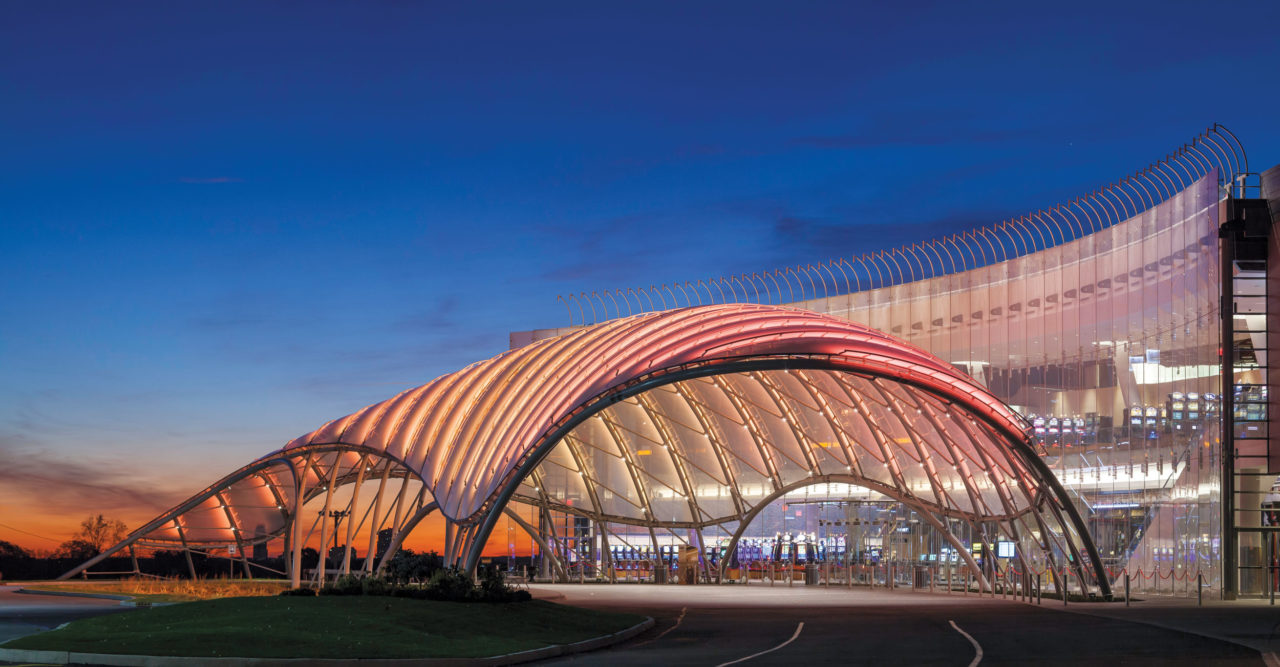
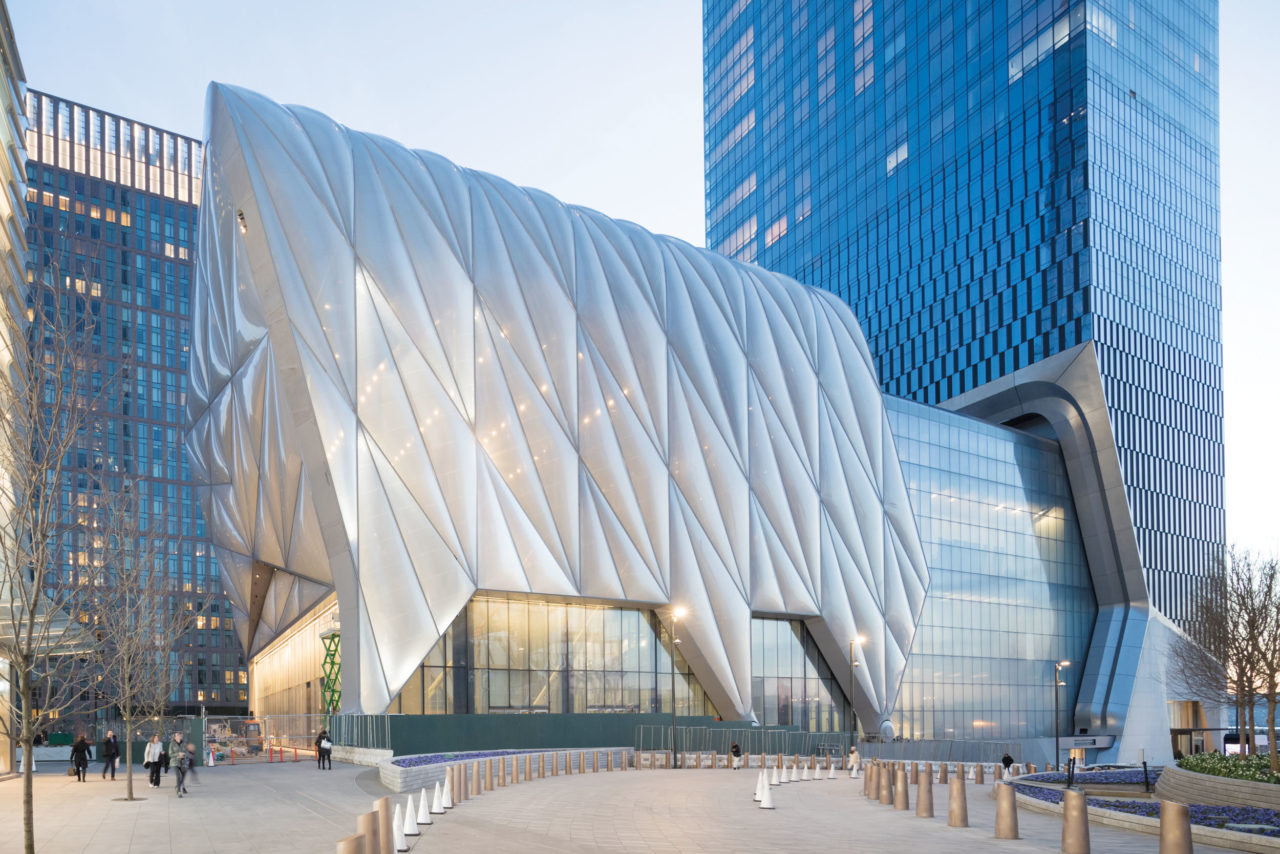
The light, transparent, chemically inert polymer, a relative of polytetrafluoroethylene (PTFE or Teflon), was developed by DuPont in the 1950s. Used as an insulator in pneumatic-cushion designs in the U.S., it has become a cladding material elsewhere, particularly in Europe, since the 1980s. It is especially well suited to facilities with long horizontal or angled spans where glass would be troublesomely heavy: the National Aquatics Center (Water Cube) by Arup and various partners for the 2008 Beijing Olympics; Herzog & de Meuron’s Allianz Arena in Munich, Germany, and Beijing National Stadium (Bird’s Nest); Nicholas Grimshaw’s Eden Project in Cornwall, England; and Foster and Partners’s Khan Shatyr Entertainment Center in Kazakhstan.
More recently, American architects are adopting ETFE as a solution to structural, thermal, and other challenges, with minimal maintenance (it’s slick enough to clean itself during rainfall) and an aesthetic bonus in the form of daylight. It’s sustainable, too: since it is ultraviolet-stable, it avoids slow discoloration and has held up well in European buildings for 20 or more years.
HKS Architects’s angular roof on the U.S. Bank Stadium in Minneapolis, home of the Vikings and the 2018 Super Bowl, introduced ETFE to mainstream U.S. audiences in 2016. HKS’s forthcoming stadium for the Los Angeles Rams, with ETFE forming an open canopy, finesses the distinction between enclosed and open-air structures.
Fritting or repetitive-pattern digital printing allows fine-tuning of translucencies, from 95% transparent to off-white, smoky-black, or other colors at 75% to 85%; ETFE is never completely opaque. US Bank Stadium uses 65% fritting on a three-layer pillow inflated to about 6 psf, says John Hutchings, FAIA, principal and sports director at HKS. “The first game I went to,” he reports, “people were wearing sunglasses. I thought, We’ve done it! We were able to achieve an indoor stadium that felt like you were outdoors in the elements.”
ETFE, like any new technology, generates both enthusiasm and skepticism. Early adopters recognize the reasons for its popularity while cautioning about its vulnerabilities. Properly deployed, it is a game changer, offering most of the advantages of glass, plus novel benefits, at about 1/100th the weight. Incautiously applied, it could become material science’s version of the Edsel. Its future depends on how well architects and engineers consider its properties and integrate it into systems.
DSR Associate Principal Charles Berman, AIA, views the Shed as the New York market’s “icebreaker” for the material, yet it is not the area’s first. That honor belongs to the Empire City Casino and Raceway in Yonkers, NY, designed by Studio V’s Jay Valgora, AIA, AICP, with Nic Goldsmith of FTL Architecture and Engineering as specialty structure consultant, and completed in 2013. The porte cochère welcomes patrons of the harness-racing complex beneath a sweeping canopy of ETFE on a light steel framework.
Owner Tim Rooneyasked for “something that would be iconic and reposition his property,” says Valgora. Inspired by the gridshells of Frei Otto (Goldsmith’s one-time employer) and Robert Maillart’s predilection for light, efficient designs, the two designers envisioned a form that would “leap up out of the hillside, so it grows out of the geometry of the site,” says Valgora. He and Goldsmith derived the frame from a torus segment, modeling its curves as a digital equivalent of the chains Antonio Gaudí hung to derive catenary curves for the Sagrada Familia in Barcelona.
Valgora cites Roland Barthes’s credo balancing vision and execution (“Architecture is always dream and function, expression of a utopia and instrument of a convenience”) and finds ETFE as practical as it is graceful. Covering the grid with ETFE foil rather than glass allowed for lightness and economy: the column-free frame’s steel members are only eight inches in diameter (12 inches for the larger edge elements), and the design accommodates wind uplift as well as gravity loads. And, in case of fire, ETFE evaporates almost instantly rather than burning, obviating a sprinkler system.









